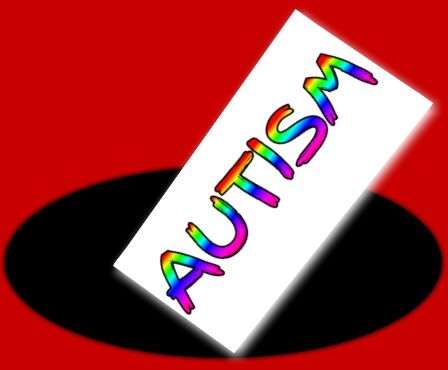Introduction
The first Tuesday of May marks an important day for raising awareness about a respiratory condition known as asthma. This day is known as World Asthma Day.
In this blog post, we explore what World Asthma Day is. It’s significance to me as an asthmatic. My experience with both asthma and autism. How asthma and autism could be related.
What is World Asthma Day?
This special event is celebrated globally and was initiated in 1998 by GINA (Global Initiative For Asthma). The event is celebrated on the first Tuesday of every May annually, and is held in 33 countries to raise awareness about the respiratory condition. The day often has either a focus or theme which is on what may affect asthma. For example, one theme was “Allergy And Asthma” (Twinkl Parents, n.d.).
It is considerate to become aware & knowledgeable about this very serious respiratory condition, which affects an estimated 300 million people worldwide (WHO, 2024).

This year the nonprofit organisation GINA, has selected the topic “Make Inhaled Treatments Accessible For ALL” as the subject of the day for 2025. The organisation highlights the requirement that asthmatic individuals have guaranteed access to prescribed steroid inhaler medications that are crucial for managing both the condition and attacks.
Respiratory attacks caused by asthma are known to create discomfort for individuals with asthma, as these attacks may result in hospitalisation and with a few cases, death (461,000 per year, (GBD, 2019; The Global Asthma Network, 2022). Steroid inhaler medications relieve the severity of the symptoms by healing the inflammation in the airways. (GINA, n.d.)
Raising Awareness About Asthma
There are various ways to raise awareness about asthma both online and in the real world. Some of these include:
- Joining/Donating to support nonprofit organisations dedicated to asthma education, research and awareness.
- Ensuring that yourself and other family members/friends know about the symptoms of asthma and what to do when an attack occurs.
- Using social media platforms to raise awareness about asthma.
- Creating discussion opportunities on social networking platforms, centered around asthma awareness.
- Consider formal training in a first-aid certificate in how to treat asthma attacks.
- Participating in asthma awareness based programs and events such as World Asthma Day, in your community.
- Sharing resources about asthma at places such as libraries, community centres, schools and universities.
- Connecting with local health organisations to volunteer to promote awareness about asthma.
This list only has some of the possible ways you can help raise awareness about asthma. There are many more ways to positively contribute to a brighter future for asthmatics. Would love to read your ideas in the comments section below!
How Asthma Relates To Autism
Research suggests that autism often occurs with immune-related conditions like asthma (Gong et al., 2023). The study looked at individuals from families known to have co-occurring autism and asthma, that were born in Sweden between 1992 to 2007. Genetic analysis was then used to calculate the roles of genes and the environment in the co-occurrence of the two conditions. Correlations (which can only show a relationship between the two traits & can never show causation) showed a weak relationship between autism and asthma that were influenced by genes.
The study found that family co-occurrence of autism and asthma decreased when there were fewer relatives in the family, hinting that both conditions may share risk factors from the family. Genetic modeling statistically suggested a high genetic correlation between autism traits and asthma, underscoring the need of recognising these comorbidities. However, the analysis did not show enough statistically significant genetic correlations between asthma and autism. These findings show the requirement for raising awareness and research into how asthma and autism may be interconnected and thereby supporting families navigating their way through complex health challenges. (Gong et al., 2023)
How Asthma Impacts Autism & Quality Of Life
One of the ways asthma can significantly disrupt an individual affected by autism is an escalation of autism-related behaviours due to asthma symptoms. Persistent respiratory attacks may escalate concerns and tensions, therefore increasing the severity of autism-related behaviours such as stimming (repetitive behaviours), oversensitivity, meltdowns and an unwillingness to interact with the community.
Educational and social consequences for those with a combination of autism and asthma are significant. The symptoms of asthma may cause withdrawal in social activities such as exercise and outdoor gatherings, reducing the likelihood for interacting with groups and impacting development on social skills. In academic settings, absences due to asthma and challenges focusing due to respiratory distress can affect grades and inclusion into society. (NeuroLaunch editors, 2024)
My Experience With Asthma & Autism
In my experience as a little child, asthma (also known as bronchiolitis or reactive airway disease in children under 3 years of age) (Poonam & Lori., 2024) would often cause sleep disturbances and respiratory distress during the colder months of the year in South Australia, most notably during winter. The cold air would often cause my airways to narrow at night, which resulted in coughing, wheezing and a tight feeling in my chest from the narrow airways. Sometimes this was so severe that I needed hospitalisation when I was a very young child. Various respiratory viruses such as the common cold, flu and others often were the cause of a lot of asthma attacks back then. 🧒🏻
Because I was 15 weeks premature, my lungs were not designed to breathe on their own at that time, which made made me vulnerable to bronchiolitis. Throughout my childhood and even now as an adult, any respiratory virus that infects my lungs can result in an asthma attack.
As I got older, my asthma symptoms slowly got less severe as my lungs began to develop more and mature. Today, I still am affected by asthma, but much less than when I was as a toddler and a little child. Climbing stairs (especially ones with steep inclines) and hills still is an issue today because my asthmatic lungs are unable to deliver enough oxygen required to meet the increased demand.
Asthma also worsened my anxiety and autism symptoms as a child because I used to live in fear of another respiratory attack. This was especially true in autumn and winter where the air was cold, crisp and dry, which acted as a trigger for the attack. Other common triggers for me include thunderstorms, pollen (common in spring and somewhat in autumn), pollution, bushfire smoke or in some cases, extremely hot weather (such as 47C). ☀️
Stress also played a significant role in contributing to and exacerbating my asthma attacks when I was a child. For example, meltdowns often initiated respiratory attacks as the severe emotional distress irritated my airways.
Windy days often are the trigger for extreme anxiety leading to stress for me because of the loud noise created by the wind and the sound of the trees roaring. A fear of strong wind is known as ancraophobia. When these winds carry pollen from the grass and other pollen-producing plants, an asthma attack would become possible. Mushrooms & other fungal spores also contribute to asthma attacks (Hughes et al., 2022). I find for myself, this applies particularly during autumn (March to May in South Australia). 🍁
Princess Lilli Lilac

Princess Lilli Lilac provides me with a lot of emotional support and therapeutic effects over the years. We both share an unbreakable friendship that will never expire. 💜
Important disclaimer: The information provided in this blog post comes from my understanding and experience of autism and asthma as well as researched sources and must not be relied upon as medical advice since I am not a trained medical professional. Please consult a qualified medical professional for tailored advice about autism and asthma.
Conclusion
While research does indeed suggest that autism and asthma may have a possible link, this is largely unconfirmed, and may be subject to change in the future.
I hope you have learned something about World Asthma Day, how autism and asthma may be related to each other, and how this impacts me with both autism and asthma. Please kindly consider leaving a reply in the comments below and I shall see you on the next blog post! 🗞
References
Twinkl Parents. (n.d.). What is world asthma day? https://www.twinkl.com.au/blog/what-is-world-asthma-day
GINA. (n.d.) World Asthma Day 2025. https://ginasthma.org/wad-2025/
Gong, T., Lundholm, C., Lundström, S., Kuja-Halkola, R., Taylor, M. J., & Almqvist, C. (2023). Understanding the relationship between asthma and autism spectrum disorder: a population-based family and twin study. Psychological medicine, 53(7), 3096–3104. https://doi.org/10.1017/S0033291721005158
NeuroLaunch editors. (2024, August 11). Autism and asthma connection: Unraveling the complex relationship. https://neurolaunch.com/autism-and-asthma/
World Health Organization. (2024, May 6). Asthma. https://www.who.int/news-room/fact-sheets/detail/asthma
The Global Asthma Network. (2022). The Global Asthma Report. https://globalasthmareport.org/burden/deaths.php#:~:text=The%20Global%20Burden%20of%20Disease%20(GBD)%20collaboration,asthma%20death%20rates%20declined%20over%20this%20period.
Poonam., S., Lori., K. (2024, March 12). Childhood asthma. WebMD. https://www.webmd.com/asthma/children-asthma
Hughes, K. M., Price, D., Torriero, A. A. J., Symonds, M. R. E., & Suphioglu, C. (2022). Impact of Fungal Spores on Asthma Prevalence and Hospitalization. International journal of molecular sciences, 23(8), 4313. https://doi.org/10.3390/ijms23084313
